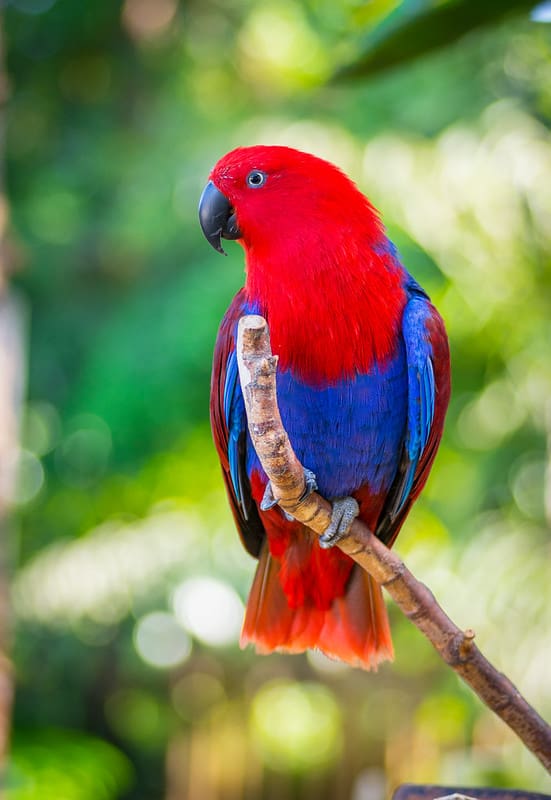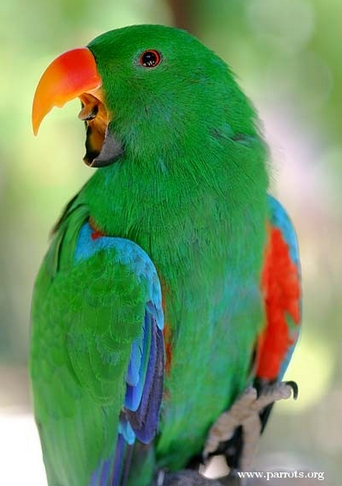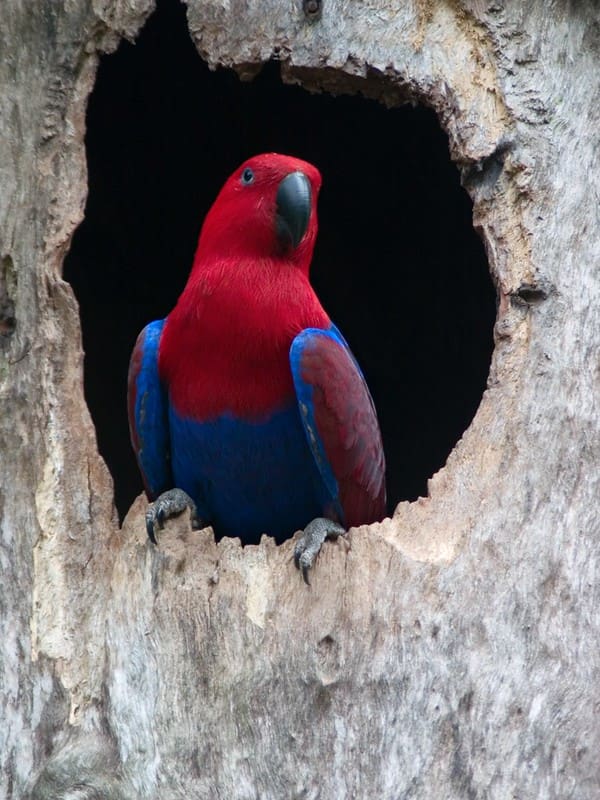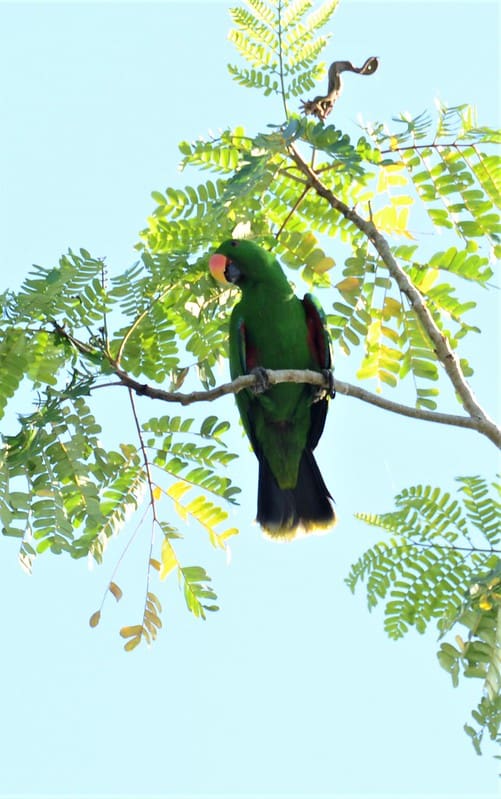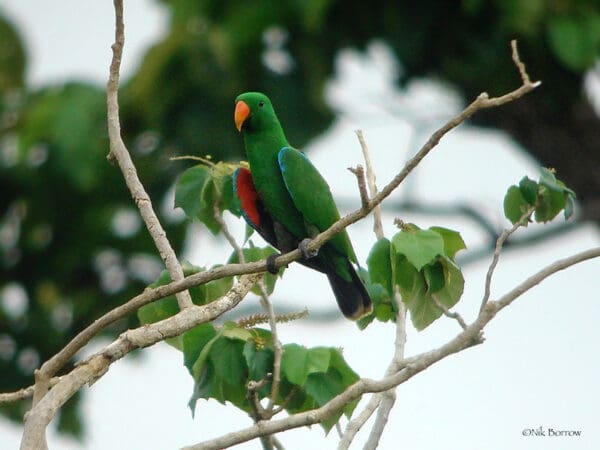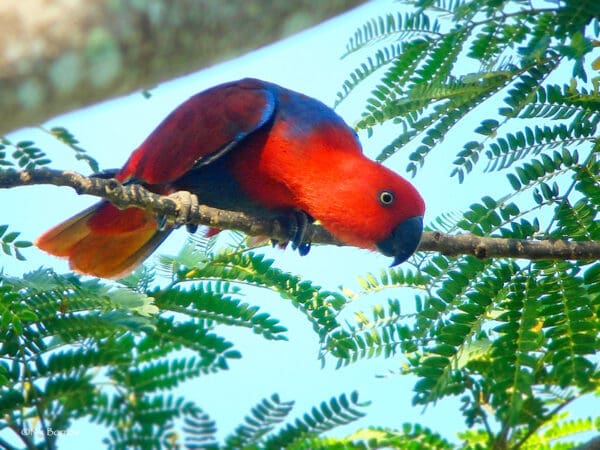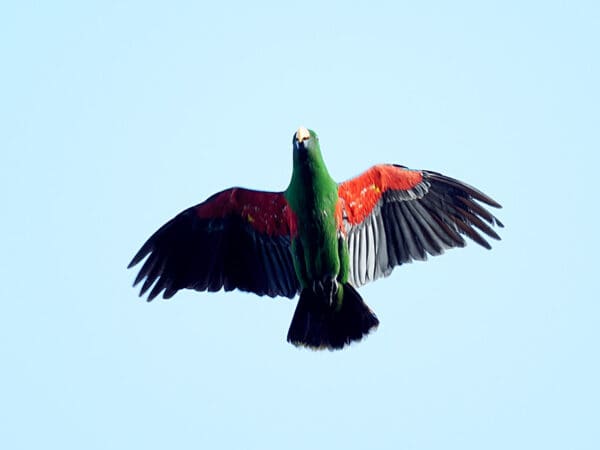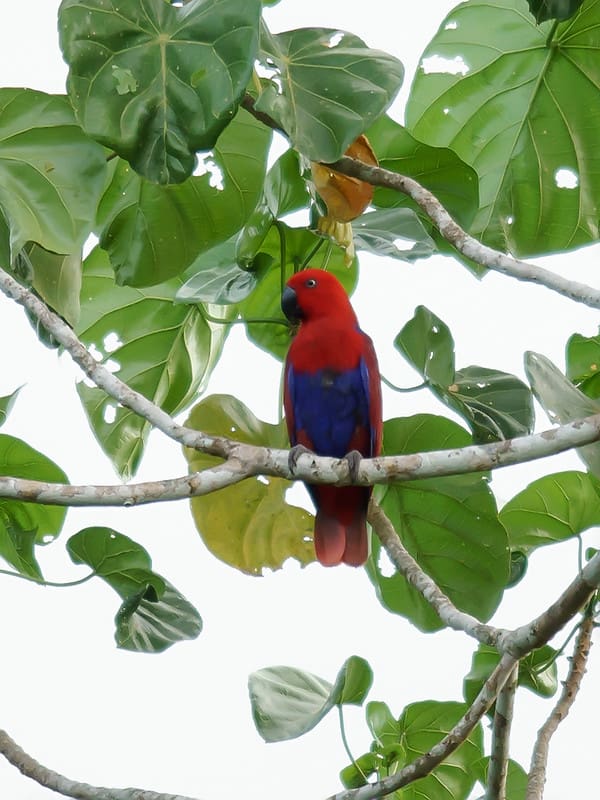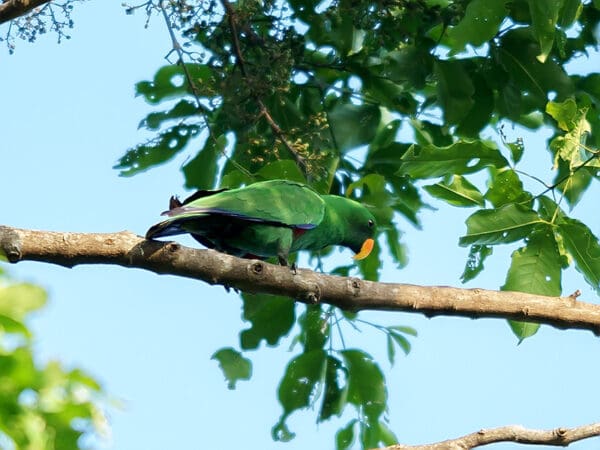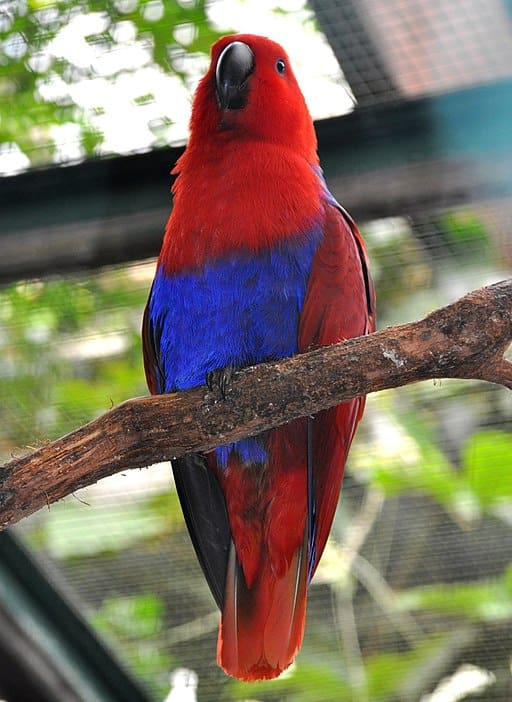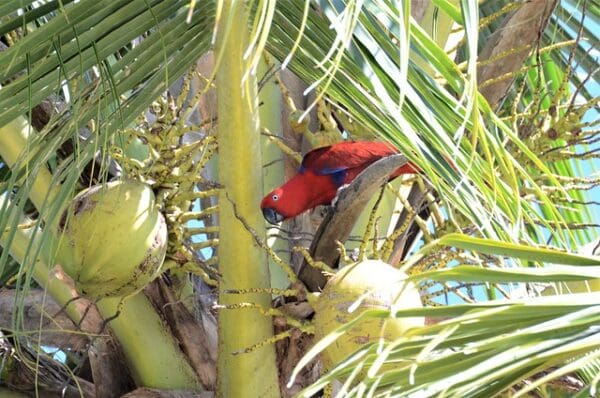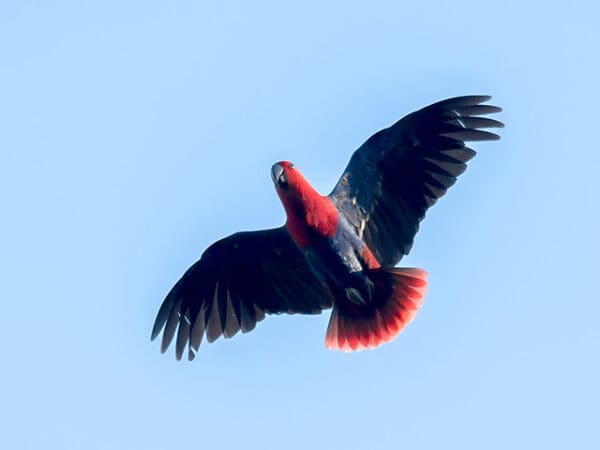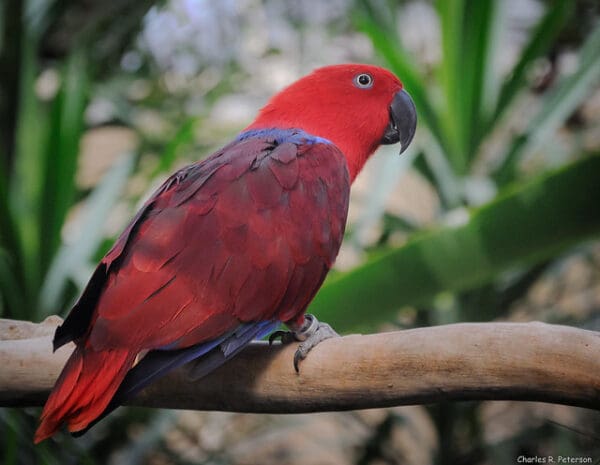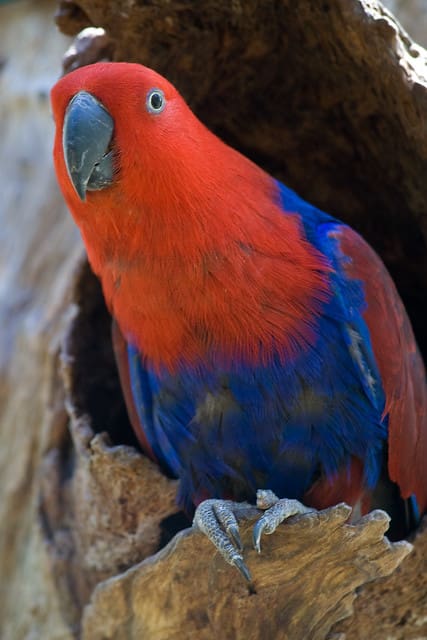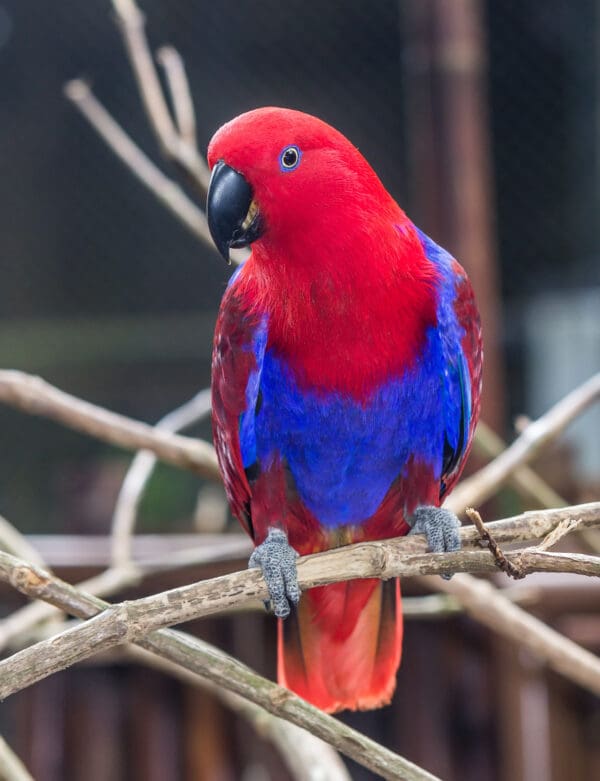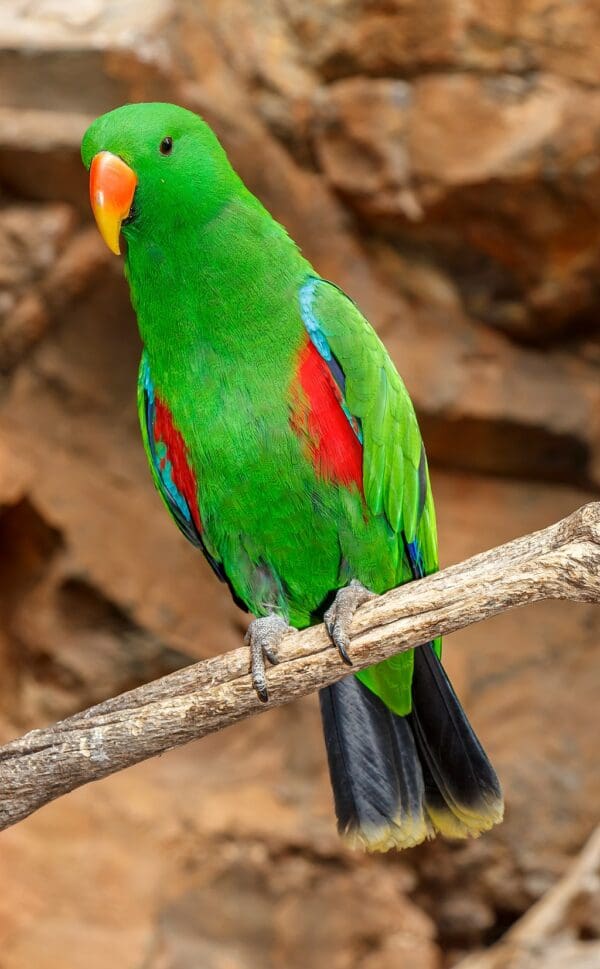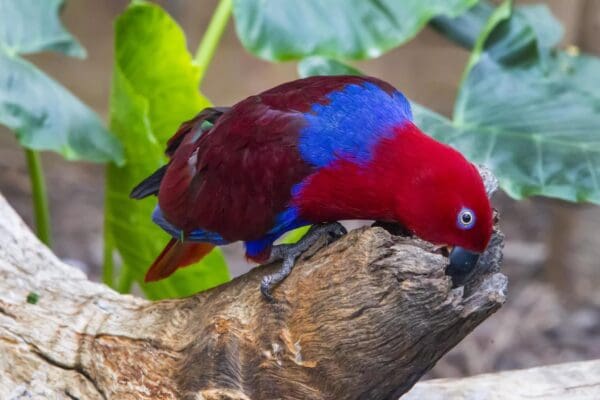![© Viv Lynch | [CC BY-SA 2.0] via Flickr A female Papuan Eclectus perches on a branch](https://parrots.org/wp-content/uploads/2023/01/wpt_Papuan-Eclectus_2172-13-100x100.jpg)
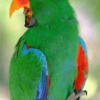
![© Peter Niljenhuis [CC BY-SA 2.0] via Flickr A wild female Papuan Eclectus perches at the entrance to a nest cavity](https://parrots.org/wp-content/uploads/2023/01/wpt_Papuan-Eclectus_2172-14-100x100.jpg)
![© Pavel Kirllov [CC BY-SA 2.0] via Flickr A wild male Papuan Eclectus perches in a tree](https://parrots.org/wp-content/uploads/2023/01/wpt_Papuan-Eclectus_2172-12-100x100.jpg)
![© Nik Borrow [CC BY-SA 2.0] via Flickr A wild male Papuan Eclectus perches in a tree](https://parrots.org/wp-content/uploads/2023/01/wpt_Papuan-Eclectus_2172-11-100x100.jpg)
![© Nik Borrow [CC BY-SA 2.0] via Flickr A wild female Papuan Eclectus perches in a tree](https://parrots.org/wp-content/uploads/2023/01/wpt_Papuan-Eclectus_2172-10-100x100.jpg)
![© David Cook [CC BY-SA 2.0] via Flickr A wild male Papuan Eclectus flies high above the forest](https://parrots.org/wp-content/uploads/2023/01/wpt_Papuan-Eclectus_2172-9-100x100.jpg)
![© David Cook [CC BY-SA 2.0] via Flickr A wild female Papuan Eclectus perches in a leafy tree](https://parrots.org/wp-content/uploads/2023/01/wpt_Papuan-Eclectus_2172-8-100x100.jpg)
![© David Cook [CC BY-SA 2.0] via Flickr A wild male Papuan Eclectus walks along a branch](https://parrots.org/wp-content/uploads/2023/01/wpt_Papuan-Eclectus_2172-7-100x100.jpg)
![© Quartl [CC BY-SA 3.0] via Flickr A female Papuan Eclectus perches in an enclosure](https://parrots.org/wp-content/uploads/2023/01/wpt_Papuan-Eclectus_2172-4-100x100.jpg)
![© Pavel Kirllov [CC BY-SA 2.0] via Flickr A wild female Papuan Eclectus climbs in a coconut palm](https://parrots.org/wp-content/uploads/2023/01/wpt_Papuan-Eclectus_2172-3-100x100.jpg)
![© David Cook [CC BY-SA 2.0] via Flickr A wild female Papuan Eclectus flies high above the canopy](https://parrots.org/wp-content/uploads/2023/01/wpt_Papuan-Eclectus_2172-2-100x100.jpg)
![© Charles Peterson [CC BY-SA 2.0] via Flickr A female Papuan Eclectus perches on a limb](https://parrots.org/wp-content/uploads/2023/01/wpt_Papuan-Eclectus_2172-1-100x100.jpg)
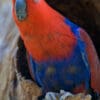
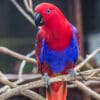
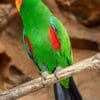
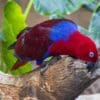
DID YOU KNOW?
The Eclectus Parrot species was split in 2019 to four new taxa: Moluccan, Papuan, Tanimbar and Sumba Eclectus.

Eclectus

polychloros
Size:
35 cm (13.6 in)
Weight:
450-600 g (15.75-21 oz)
Subspecies including nominate:
five: E. p. polychloros, E. p. aruensis, E. p. biaki, E. p. macgillivrayi, E. p. solomonensis
Colour Adult:
E.p. polychloros: Male-All green, with head and neck darker green; tail green tipped with yellow/white, the side feathers blue tipped yellow/white and washed with green on outer webs; larger. Upper mandible orange tipped with yellow, lower mandible black. Female-as in roratus, but brighter red on head and upper breast; eye ring feathered and blue; underwing coverts to lower breast and abdomen as well as stripe across mantle deep blue; red of upper breast not washed into blue lower breast; undertail coverts red; tail red tipped with orange. Beak black.
E.p. biaki: Both adults as in polychloros, but smaller in size; in female hindneck and upperparts brighter red.
E.p. aruensis: Both adults as in polychloros but tail in male more widely tipped with yellow and female’s tail brighter red.
E.p. macgillivrayi: Both adults as in polychloros but larger and with longer tails; less yellow tinge to green body colour of male.
E.p. solomonensis: Male-as in polychloros but green plumage more yellow, particularly on head and neck; outer webs of primary feathers more bright lilac/blue becoming deep blue toward tips; smaller in size. Female-as in polychloros but head and breast brighter red; underwing coverts to lower breast, abdomen and wide band on mantle deeper blue, less purple; outer webs of primary feathers more bright purple/blue, becoming deep blue toward tips; smaller in size.
Colour Juvenile:
As in adults but duller; in both sexes upper mandible dark brown/grey tipped yellow. Eye brown.
Call:
In flight: loud, rough screech repeated continuously or in short bursts. Various alarm calls, more mellow calls and a bell-like sound possibly heard before mating.
More Information:
WPT-supported project – Fighting Parrot Trafficking in Indonesia
Content Sources:
Avibase
BirdLife International
Cornell Lab of Ornithology/Birds of the World
Parrots of the World, Forshaw, 2010
Parrots in Aviculture, Low, Rosemary, 1992.
Captive Status:
Fairly common.
Longevity:
Up to 50 years.
Housing:
Aviary or suspended cage, minimum length 3 m (9.8 ft).
Diet:
Fruit, any type but especially apple, pear, orange, cactus fruits, pomegranate, banana, forming about 30 percent of diet; fresh vegetables especially carrot, celery, green peas, beans, fresh corn and green leaves. Cooked/sprouted beans or pulses. Spray millet, mix of small seeds (canary, millet, small amounts of oats, buckwheat, safflower, limited sunflower) and complete kibble.
Enrichment:
Bird-safe chewable toys, branches, puzzle toys, bathing, peek-a-boo games, swings, ropes.
Nest Box Size:
30 cm (11.7″) square and 1.2 m (4 ft) high, or 12″x 12″x 24″ (30.5 cm x 30.5 cm x 61 cm) vertical box.
Clutch Size:
2 eggs.
Fledging Age:
11 weeks.
Hatch Weight:
—
Peak Weight:
—
Weaning Weight:
—
World Population:
990,000-1,100,000 mature individuals, decreasing.
IUCN Red List Status:
Least Concern
CITES Listing:
Appendix II
Threat Summary:
The largest threats are increased deforestation, and hunting and trapping for the wildlife trade. Large-scale clearance of lowland forest throughout the Solomon Islands has had a significant impact. A steep decline has occurred over the last 30 years in northern Australia, largely due to illegal trapping and trade.
Range:
E.p. polychloros: Kai and W Papuan Islands, Indonesia, east through New Guinea; Boigu, Dauan and Saibai Islands, northern Torres Strait Islands, Australia, to Trobriand Islands and D’Entrecasteaux and Louisiade Archipelagos, E Papua New Guinea.
E.p. biaki: Biak Island, in Geelvink Bay, West Papua.
E.p. aruensis: Aru Islands, Indonesia.
E.p. macgillivrayi: E Cape York Peninsula, Queensland, N Australia, from Pascoe River south to Massy Creek and McIllwraith Range.
E.p. solomonensis: Admiralty Islands and Bismarck Archipelago to Buka and Bougainville Islands, E Papua New Guinea, and Solomon Islands.
Habitat:
Found in the canopy of all wooded habitats, but most common in primary lowland forest usually below 1000m. Also found from coast to mid-montane areas, including mangroves, Nypa forest, freshwater swamp, dryland forest, coastal scrub, denser savanna woodland, parkland, plantations, secondary growth and garden areas. Prefers deciduous trees in N Australia.
Wild Diet:
Birds typically feed on fruits, seeds, nuts, leaf-buds and blossoms, mainly Parinarium and Pandanus.
Ecology and Behaviour:
Birds are found singly, in pairs or small groups. Often found soaring high above the forest calling loudly. Wary; foraging groups found in treetops. Mostly active at dawn and dusk traveling to and from roosting areas where up to 80 birds will settle in for rest.
Clutch and Egg Size:
2, broad, ovate shaped, 40.0 x 31.0 mm (1.5 x 1.2 in).
Breeding Season:
April-September. Nest is in tree cavity.
